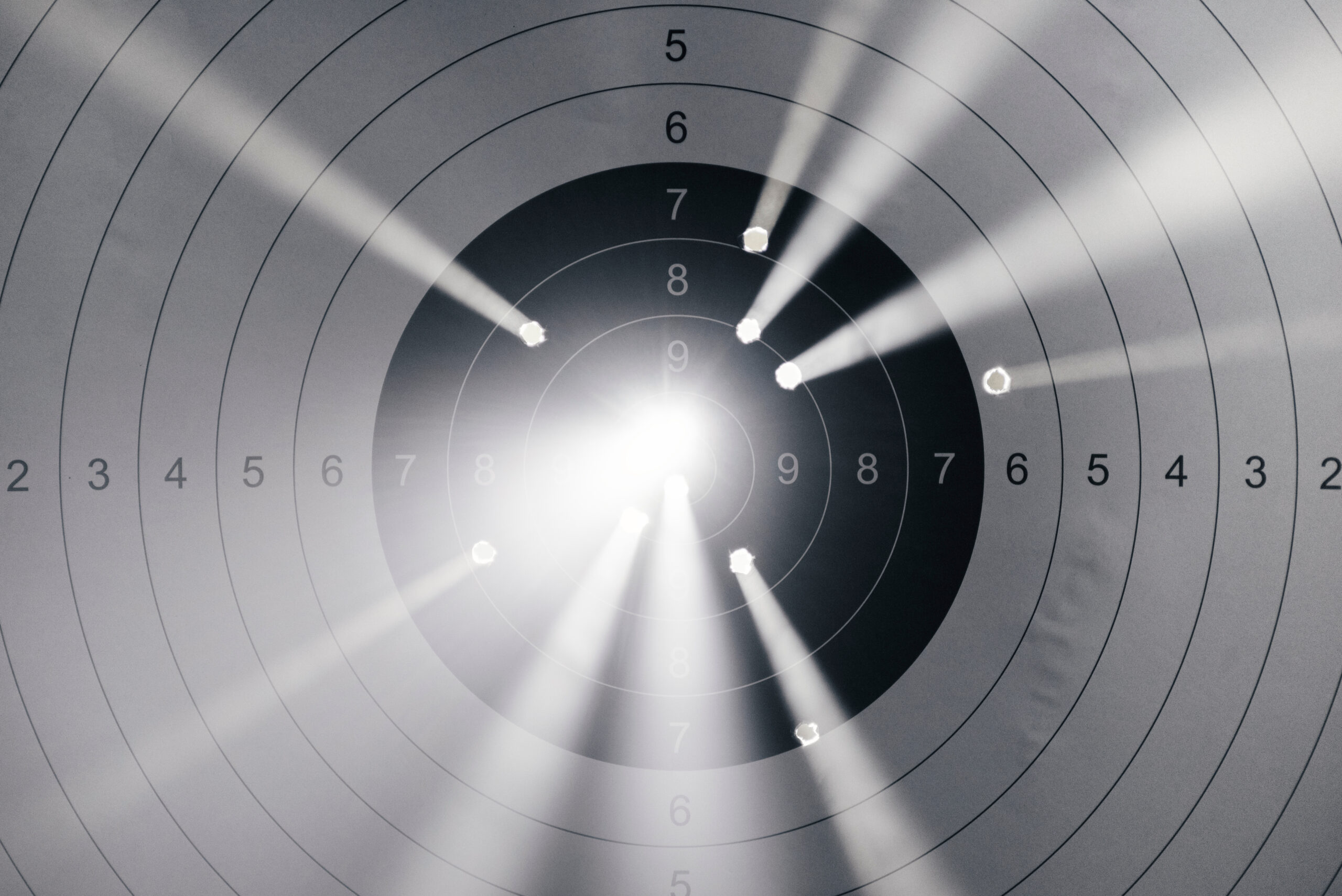
I am sure you have played this game a few times before: someone asks players to individually guess the number of jelly beans in a jar. The winner is the one whose guess comes the closest. If you are like me, chances are you have never come even close to winning.
Guessing the number of jelly beans is like target practice at a shooting range. If we are lucky, we may hit the bullseye. But most of the time, we don’t. The outcomes are often scattered around the bullseye.
This is analogous to the judgments and decisions we make in our professional and personal lives. Whether we are an estimator bidding on a job, a foreman assessing the safety risks of a construction site, or an insurance underwriter creating a policy, we aim to hit the bullseye. However, most of the time, we come close but not quite on target. In other words, our judgments are noisy.
The noise in your jelly bean guesses is likely much higher than the noise in your target practice because you may know a thing or two more about target shooting than jelly bean guessing. In other words, the better you are at something, the closer your shots are to the target. Nonetheless, unless you are a superhero in Hollywood’s imagination, you will not hit the bullseye all the time. Regardless of their expertise, the judgments people make in their personal or professional lives are noisy.
For instance, researchers studying insurance underwriting discovered that the median difference in price for similar policies was more than 50 percent. Similarly, for claim adjusters, the median difference was 43 percent.
Keep in mind these are the results of decisions made by expert “jelly bean counters” in their respective fields. If the decisions made by these experts can lead to such excessive noise, there is no reason to believe that the decisions made by other experts, such as a foreman working on a JHA/THA or a risk analyst managing construction risk, will be any less noisy.
We often think of noise as something that has an averaging effect and are content with our results as long as the average of the outcomes meets our objectives. For instance, in insurance claim payouts, a lower-than-ideal payout may make up for the loss due to a higher payout.
Unfortunately, many of our judgments do not afford us such luxuries. Bid too high, and we risk losing the project. Bid too low, and we risk losing money on the project. And when it comes to safety, there is no such averaging effect. No amount of incident-free workdays can make up for even one safety incident.
Going back to our target practice analogy, the reason we don’t hit the bullseye is due to the combination of noise and biases in the system. Noise, such as shaky hands or interference from our heartbeats, causes our shots to be scattered around the bullseye. A bias, such as a misaligned scope or wind, causes our shots to be clustered to one side of the bullseye.
In the case of our judgments, the reason we don’t hit targets is due to psychological biases and noise in our decision systems. You may already be familiar with psychological biases in our judgments. Concepts like confirmation bias, anchoring, groupthink, and overconfidence bias have almost become part of our everyday conversation. In my previous posts, I have written about psychological biases that influence our judgments. But where is the noise coming from, and how pervasive is it?
The late Daniel Kahneman, along with two other well-renowned psychologists, tries to answer these and many other questions in his latest publication aptly named Noise. Kahneman, a renowned psychologist and winner of the Nobel Prize in Economics, is credited for his groundbreaking work in behavioral psychology, which became the foundation of behavioral economics. His bestselling book, Thinking, Fast and Slow, which takes readers on a fascinating journey of the human mind, is a must-read for those who want to understand psychological biases.
In Noise, the authors take us on a similar journey to help us understand the noise in our decision-making process. They expose its pervasiveness, its impact (including the examples I cited above), and strategies we can follow to mitigate it.
In almost every aspect of our lives – whether personal or professional, recurring or once-in-a-lifetime – we make decisions based on our judgments. And in each of those judgments, noise is inevitable. What may not be inevitable, however, is the degree of the noise, something we will explore in our future posts as we follow along with Daniel Kahneman and his co-authors in their journey of noise.
